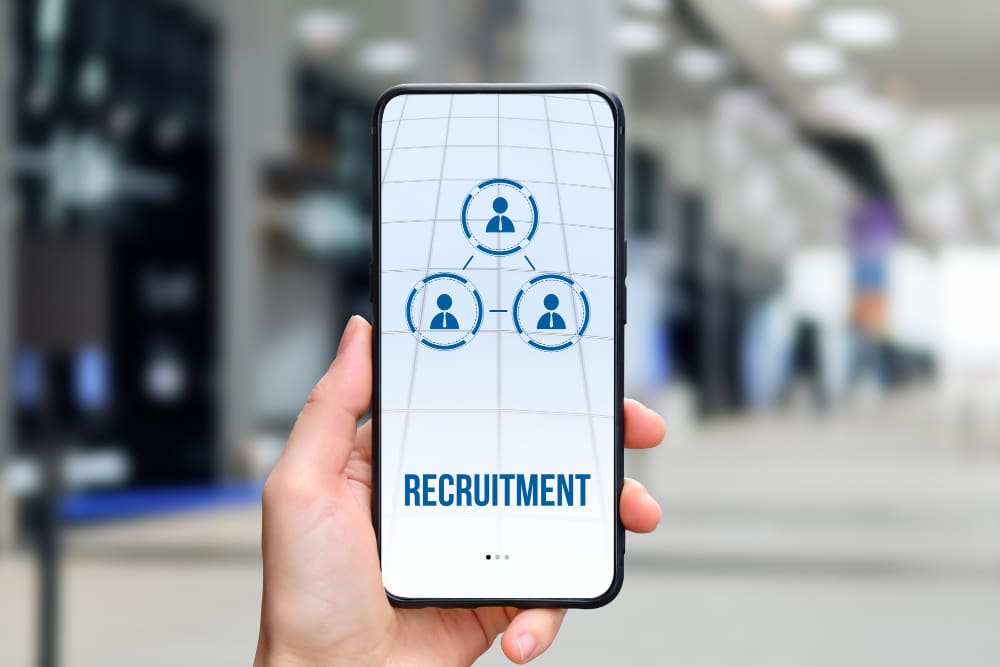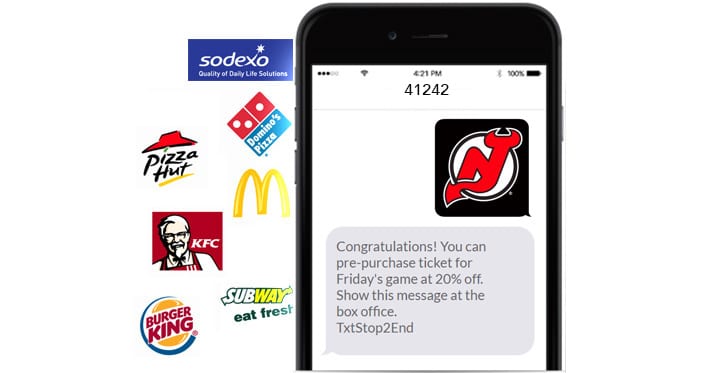Table of Contents
The recruitment landscape is evolving rapidly, with technology at the forefront of transforming traditional practices. Among these innovations, text messaging emerges as a powerful tool, offering unparalleled speed and efficiency in communicating with potential candidates.
This blog post delves into the transformative potential of using text messaging to improve recruiting and hiring process, exploring its benefits, strategies for implementation, and best practices for maximizing its impact.
The Compelling Case for Text Messaging in Recruitment
Imagine sending a message and getting a response in just a matter of minutes. This isn’t a futuristic scenario but the reality of text messaging today. With over 90% of texts opened and read within three minutes, the case for integrating SMS into recruitment strategies becomes irrefutable.
This rapid engagement far surpasses email communication, where the average response time can linger around 47 minutes. Such immediacy in communication is not just a convenience; it’s a strategic advantage in the fast-paced world of recruiting.
Furthermore, text messaging offers a level of accessibility that transcends traditional communication channels. In an era where mobile devices are ubiquitous, text messages provide a direct and convenient means of reaching candidates anytime, anywhere. Whether it’s a quick follow-up on an application, scheduling an interview, or providing timely updates on the hiring process, text messaging ensures that recruiters can maintain seamless communication with candidates, even when they’re on the go.
Moreover, the personalization and intimacy inherent in text messaging can significantly enhance the candidate experience. By tailoring messages to individual candidates and addressing their specific needs and preferences, recruiters can foster a sense of connection and engagement that is often lacking in more impersonal forms of communication.
Benefits of Text Messaging
Text messaging has emerged as a powerful tool in modern recruitment strategies, offering several advantages for both recruiters and candidates alike.
- Real-Time Communication: Text messaging enables instant communication between recruiters and candidates, allowing for timely updates, interview scheduling, and quick responses to inquiries.
- Increased Candidate Engagement: With higher open and response rates compared to other communication methods, text messaging encourages candidates to actively engage throughout the recruitment process.
- Enhanced Candidate Experience: Personalized and convenient communication via text messages contributes to a positive candidate experience by offering flexibility and accessibility while also building rapport and strengthening the employer brand.
- Accessibility: Text messaging leverages the widespread use of mobile devices, providing candidates with a convenient and accessible communication channel that they can engage with anytime, anywhere.
- Efficiency: Text messaging streamlines the hiring process by facilitating efficient communication and reducing delays, leading to faster response times and shorter time-to-fill metrics.
- Convenience: Candidates appreciate the convenience of communicating via text messages, as they can quickly read and respond to messages on the go without the need for lengthy phone calls or email exchanges.
- Higher Response Rates: Text messages have been shown to have significantly higher response rates compared to email or phone calls, making it easier for recruiters to reach and engage with candidates effectively.
- Automation: Text messaging platforms often offer automation capabilities, allowing recruiters to automate repetitive tasks such as interview reminders or application follow-ups, further improving efficiency and scalability in recruitment processes.

Accelerating the Hiring Process
In the competitive quest for talent, speed matters. Text messaging not only accelerates the communication cycle but also streamlines various stages of the hiring process. Consider the following applications:
- Initial Outreach and Screening: Quickly gauge candidate interest and availability. A brief text can save time for both recruiters and candidates, filtering out uninterested parties early on.
- Scheduling Interviews: Coordinate interview times efficiently. Texts eliminate the back-and-forth often encountered with emails, leading to quicker scheduling.
- Interview Reminders: Minimize no-shows with timely reminders. A simple text the day before can ensure candidates remember their appointments.
- Post-Interview Feedback: Provide immediate feedback or next steps. This keeps candidates engaged and informed throughout the process.
Therefore, the candidate experience is paramount in attracting and retaining top talent. Text messaging contributes positively to this experience by catering to the preferences of a workforce increasingly reliant on mobile communication. This approach signals that an employer values convenience and respects candidates’ time, traits highly prized by job seekers today.
Best Practices for Effective Text Messaging in Recruitment
To leverage text messaging effectively, recruiters should adhere to several best practices:
- Secure Consent: Always obtain permission before sending text messages. This respects candidate privacy and complies with legal requirements.
- Maintain Professionalism: Even in a text, professionalism is key. Use clear and concise language that reflects the company’s brand and values.
- Personalize Communication: Address candidates by name and customize messages to their application or interest. Personalization enhances engagement and shows that you value their candidacy.
- Be Timely: Use text messaging for timely communications. Immediate confirmations, reminders, and updates keep candidates informed and engaged throughout the recruitment process.
- Feedback and Follow-Up: Solicit feedback on the recruitment process and provide timely updates on application status. This continuous communication fosters a positive relationship, regardless of the outcome.

Implementing a Text Messaging Strategy
Integrating text messaging into recruitment requires thoughtful planning and execution. Begin by selecting the right platform or software that allows for bulk messaging, automation, and personalization. Next, train your recruitment team on the nuances of text-based communication, emphasizing brevity, clarity, and tone.
Finally, monitor and measure the effectiveness of your text messaging strategy, making adjustments based on candidate feedback and response rates.
Compliance and Privacy
- Adherence to Legal Regulations: Recruiters must comply with legal regulations, such as the Telephone Consumer Protection Act (TCPA), when utilizing text messaging for recruiting purposes. The TCPA imposes restrictions on unsolicited text messages sent to consumers, requiring prior express consent from recipients before sending commercial messages.
- Candidate Privacy: Maintaining candidate privacy is paramount when using text messaging in recruitment. Recruiters must ensure that candidate contact information is obtained and used ethically and responsibly, with explicit consent for communication purposes only. Additionally, sensitive information shared via text messages, such as interview details or job offers, should be transmitted securely to safeguard candidate privacy.
- Opt-Out Mechanisms: Recruiters should provide candidates with clear opt-out mechanisms, allowing them to unsubscribe from receiving further text messages. Respecting candidates’ preferences and honoring opt-out requests fosters trust and ensures compliance with privacy regulations and ethical standards.
- Data Security: Implementing robust data security measures is essential to protect candidate information transmitted via text messages. Recruiters should utilize secure texting platforms and encryption technologies to safeguard data integrity and prevent unauthorized access or disclosure of sensitive information.
- Training and Compliance Oversight: Training recruiters on legal regulations, privacy policies, and best practices for text messaging ensures compliance and minimizes the risk of inadvertent violations.

FAQs:
Why is texting functionality critical in recruitment and hiring?
Texting is vital because it connects efficiently with millennial and Generation Z candidates, who predominantly use texting on their smartphones. Texts have a 90% read rate within three minutes, and the average response time for a text is three minutes—much faster than email’s 47 minutes. This speed is essential in recruitment, helping to modernize the process and provide a competitive edge.
Should emails still be sent to candidates during the recruitment process?
Yes, emails remain important for certain steps in the hiring and onboarding process, such as sending documents and forms. However, texting should be the primary communication method, supplemented by emails when necessary. Offering candidates the choice of communication via email, SMS, or both is beneficial for a responsive and positive experience.
Is it necessary to allow candidates to opt out of texting?
Absolutely. It’s crucial to provide every candidate with the option to opt out of the texting feature to avoid unwanted messages and potential data charges as they move further along the recruitment process.
Can texting in the recruitment process be automated?
Yes, automating texting is possible and beneficial. Automated texting keeps candidates engaged and informed outside of normal business hours and speeds up the recruitment process. Platforms like OnShift Employ offer automated text message templates for immediate responses, enhancing efficiency.
How does texting functionality make hiring managers more efficient and effective?
With AI-enabled texting, recruiters can quickly screen and schedule talent, adding a human touch to the hiring process and offering transparency to candidates. It also allows for rapid responses to any candidate concerns, streamlining communication.

Conclusion
Text messaging is not merely an addition to the recruitment toolkit; it is a strategic asset that can redefine how companies using text messaging to improve recruiting and hiring. By harnessing the speed, convenience, and personal touch of text messaging, recruiters can enhance the hiring process, improve candidate experience, and ultimately, secure top talent more efficiently. In the quest for competitive advantage in recruitment, text messaging is a game-changer worth embracing.






